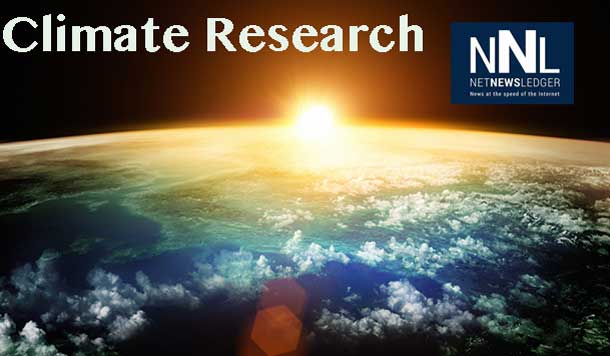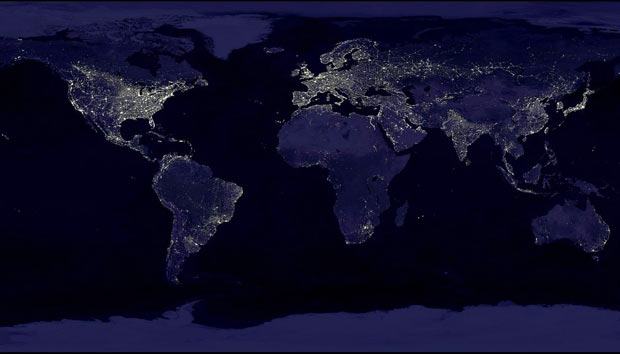 ZURICH – CLIMATE – When fossil fuels are burned, other climate-forcing gases are produced in addition to long-lasting carbon dioxide. Diesel combustion in vehicles or coal in power plants creates soot particles, which also contribute to global warming, albeit only briefly as they disappear quickly from the atmosphere. Short-lived climate pollutants (also known as Short Lived Climate Forcers or SLCF) caused by human activities include methane and sulphur dioxide, and to a lesser extent fluorocarbons. They all have a measurable impact on the climate.
ZURICH – CLIMATE – When fossil fuels are burned, other climate-forcing gases are produced in addition to long-lasting carbon dioxide. Diesel combustion in vehicles or coal in power plants creates soot particles, which also contribute to global warming, albeit only briefly as they disappear quickly from the atmosphere. Short-lived climate pollutants (also known as Short Lived Climate Forcers or SLCF) caused by human activities include methane and sulphur dioxide, and to a lesser extent fluorocarbons. They all have a measurable impact on the climate.
Politicians and industry have been considering the possibility of slowing down climate change by eliminating these SLCF without the need to immediately reduce CO2 emissions. The idea is that by eliminating short-lived climate pollutants, the international community buys time before it has to introduce CO2-cutting measures.
Doubtful climate benefit
A new argument against the unilateral reduction of SLCF emissions has now been put forth in a study just published in the scientific journal PNAS. An interdisciplinary team of researchers led by ETH climate scientist Joeri Rogelj used several models to calculate how the climatic effects of CO2 and SLCF break down and how they relate to each other.
In scenarios in which the average global temperature rises less than 2 degrees above pre-industrial levels, short-term measures to reduce SLCF had only a minor effect on the long-term rise in temperature. Even in the short term, SLCF reductions had a significantly lower effect in 2-degree scenarios.
The researchers were also not able to calculate a genuine long-term ‘climate benefit’ from the early restriction of emissions such as methane or fluorocarbons. These two SLCF species can affect temperatures in the short term, but the long-term benefits of short-term reduction measures for these two gases are no greater than if measures were taken only later.
CO2 and SLCF related
Even when additional reduction measures are implemented against black carbon, or soot, which is released when fossil fuels are burned, they do little to slow down global warming in a 2 degrees scenario. This is because if the global temperature rise is limited to 2 degrees, CO2 reduction measures would have to be taken, which would in turn cut the most important soot emissions.
In their study, the researchers show that the both the formation and the elimination of SLFC and CO2 must be considered as intrinsically linked. We can not look at one part in isolation because both emissions often come from the same source, namely fossil fuels, say the researchers.
For instance, a diesel engine emits both soot and CO2. If soot were limited by installation of a particle filter, for example, then at least one emission that warms the atmosphere would be reduced (and improve air quality ). But air pollution from soot stays in the atmosphere only briefly and therefore has an effect for only a very short period of time. Despite the filter, CO2 would still continue to be emitted and this is an extremely long-lasting greenhouse gas. Once released through combustion, it remains in the atmosphere for hundreds, even thousands, of years and continues its job as a driver of global warming over a long period of time.
No time to lose
“It is a fallacy to believe that we can win time or stabilise global warming by eliminating SLCF,” says Rogelj. Measures to reduce short-lived climate gases should instead be seen as a complement to CO2 reduction measures, not as a replacement. SLCF have an impact for only as long as they are being generated; once their supply fails, their warming effect soon disappears. The largest contributor to global warming is carbon dioxide and as it remains in the atmosphere for a long time, it works cumulatively. “If we were to stop all man-made emissions immediately, SLCF concentrations in the atmosphere would decrease quite rapidly to zero, but not so for CO2 concentrations.”
The study is based on three models: one for projecting transformations in the global energy system, an air pollution model and a climate model. The researchers reached their findings through a combination of all three.
The climate scientists calculated various scenarios with the models, including a very high-warming scenario in which no measures were taken to reduce CO2 emissions, so that CO2 concentrations in the atmosphere rise unabated to 2100. In other scenarios, CO2 emissions were curbed significantly to the extent that the target of limiting warming to below 2 degrees by 2100 is achieved.






